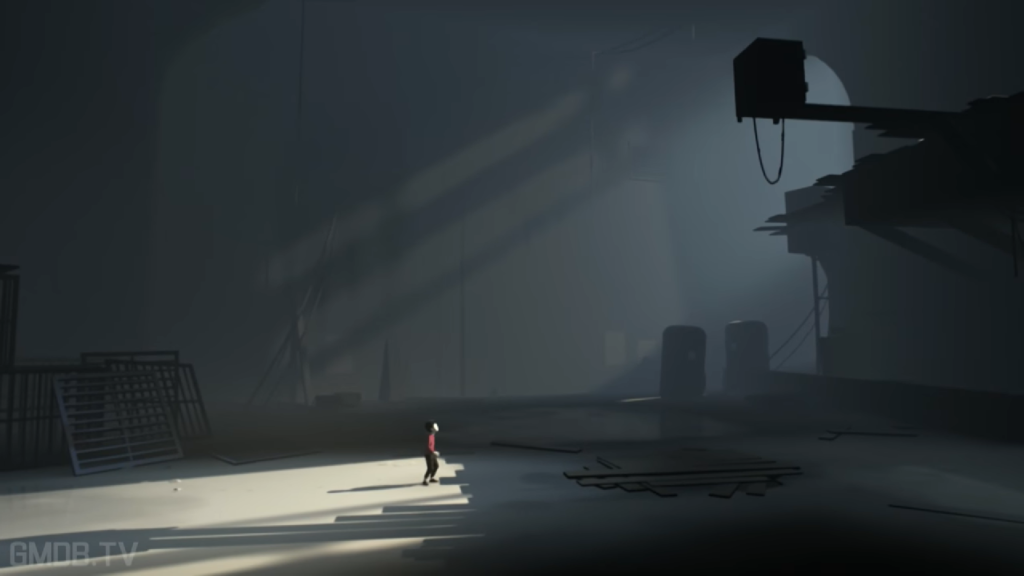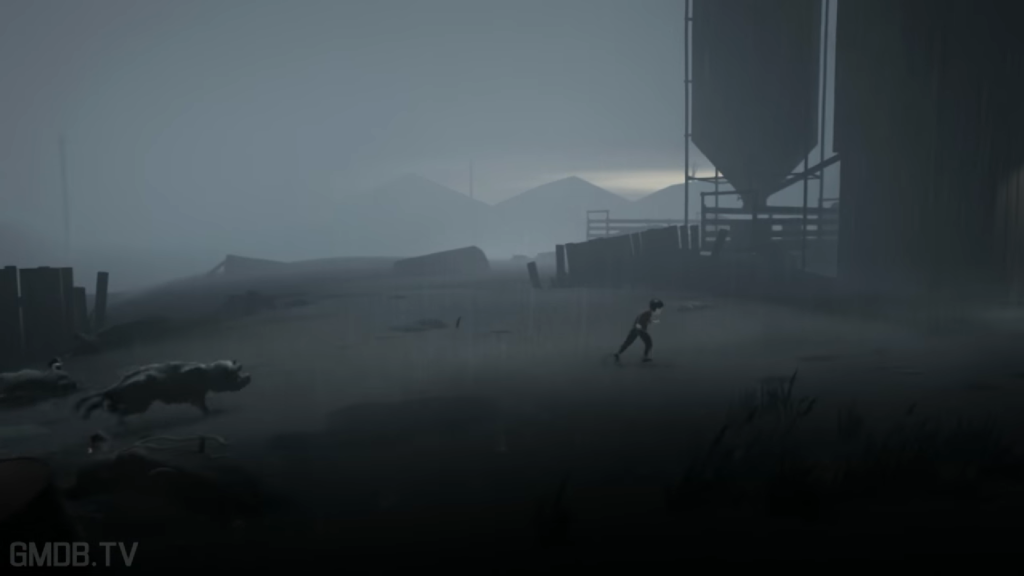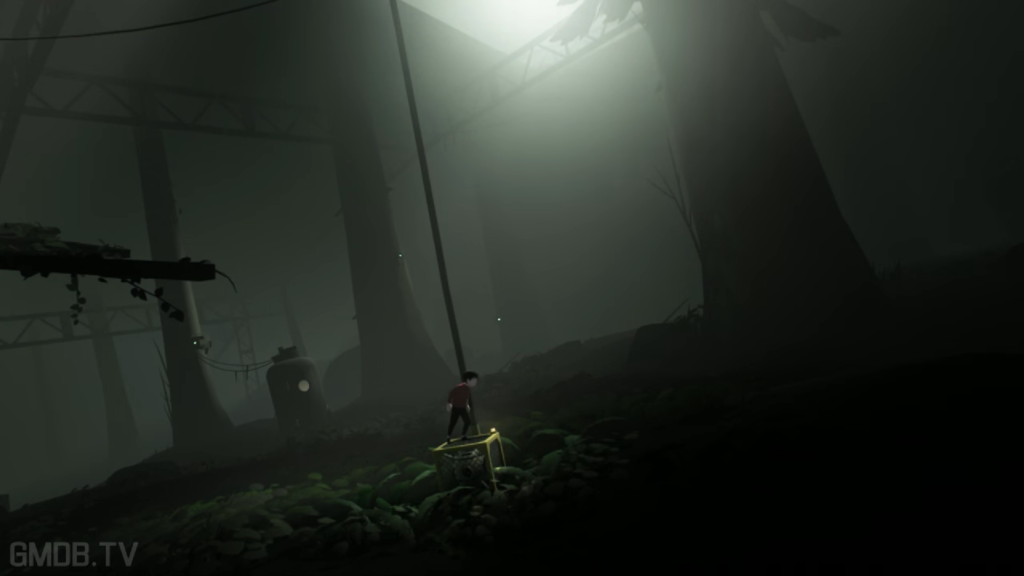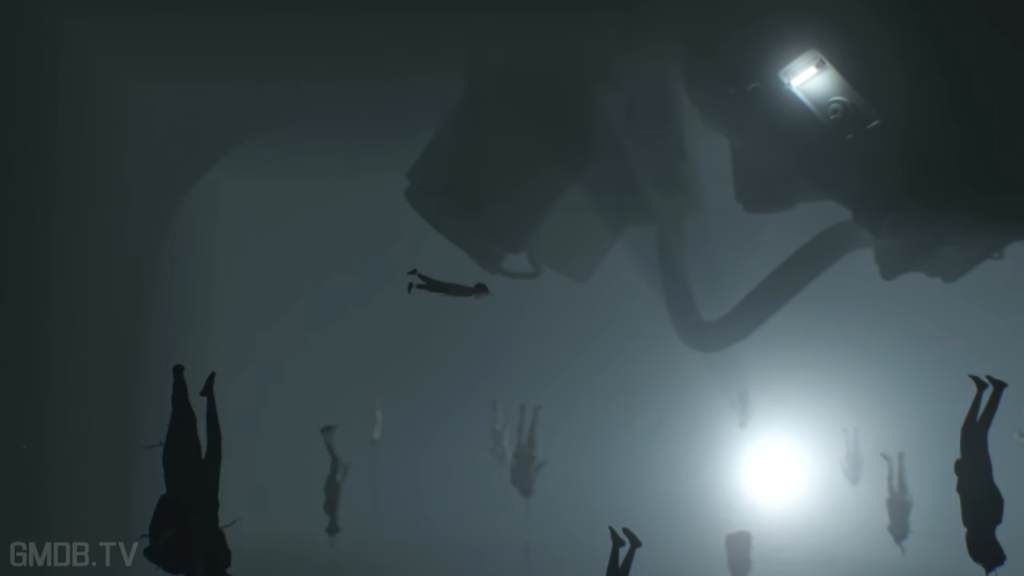It’s been three days, but I’m still trying to puzzle out the ending to Inside.
For those not in the know, Inside is Danish developer Playdead’s follow-up to their 2010 indie game hit, Limbo. Like Limbo, Inside is a 2-D puzzle platformer with more than a hint of Scandinavian darkness; in both games, a young boy must progress through a sinister, monochrome world, overcoming obstacles, puzzles, and threats to his safety.
Inside’s biggest strength is its atmosphere. The soundtrack is bare, minimalist, and haunting, reportedly the result of recording through a real human skull. Sound effects boom and echo, reinforcing how alone your character is in the hostile world. The visuals are mostly black and white, with the occasional splash of colour highlighting key characters and objects, be they benevolent or malevolent, and they are often put together with a care and consideration that would not be amiss in an oil painting. The world is cruel and hostile – you can be hunted by faceless humans, ravaged by vicious dogs, zapped by robots, ground up by machinery, or plunge to your death in dozens of bone-crunching ways. There is a steady tension and psychological horror at play here which builds and twists as the game progresses, dragged along by a simple mystery: just what is happening here?

Inside looks beautiful, making excellent use of light, shadow, and occasional splashes of colour.
Inside has no spoken dialogue and no story beyond what you can piece together from the world around you and the behaviour of other characters. In lesser hands this could leave you cold, unconnected to the boy you’re guiding, but Playdead bring their protagonist to life through absolutely exquisite animation. The boy moves just like a real kid, examining the world about him, automatically ducking to creep past enemies, or exploding into action when forced to run. And in spite of the protagonist being a child, Inside doesn’t hold back – I lost count of the number of brutal, gruesome deaths my little traveller endured. Fortunately, load times are lightning quick and the checkpoints are plentiful, so you’re never dragged out of the game for more than a few seconds at a time.

Inside had some great moments of pure, blind panic – this was just the first of many.
The world of Inside is meticulously crafted, full of hints and momentary glimpses of bigger things that haunt you as you progress. From simple beginnings, creeping through a forest while being hunted by sinister, faceless adults, Inside moves through some beautiful, sinister, and often downright disturbing environments, with a surprising amount of variety. Unlike Limbo, Inside’s protagonist can swim, and water becomes a key feature of the game and its puzzles, in some new and unique ways. Light, too, is used as the source of more than one puzzle, creating some truly memorable moments. And the game’s final act completely changes the way you play before crashing to a sudden, brutal conclusion.

At its best, this game looks stunning.
In spite of my gushing enthusiasm, Inside is not a perfect game. It only lasts three to four hours, which many will feel isn’t worth the £15/$20 price of admission. There is a secret hidden ending and collectables to go back for, but the core experience is still fairly short. There are ideas and gameplay elements that are introduced but never fully developed, and more unanswered questions than an X-Files boxset with the last disc missing. But its story-that’s-not-really-a-story has stayed with me for days after finishing the game, leaving me dwelling on concepts such as free will, automata, the environment, and the nature of games themselves. That, to me, makes Inside an important artistic statement as well as a fun, engaging game.

Inside is available on PC and Xbox One now.
Disclaimer: A review copy was provided by the publisher.
[…] from developer Bela Messex, is a two-dimensional platformer very much in the style of Limbo or Inside, albeit with a quirkier, more Tim Burton-esque aesthetic. The game is only at the “proof of […]